






Summary of Activities

The three students along with the Dr. Tan spent four weeks in Beijing, China from July 10 to Aug. 10. Before the departure, all three students had enrolled in Dr. Tan graduate level course: EE213, Computer-Aided Electronic Circuit Analysis, which prepared them for the joint research project with Prof. Hong’s group at Tsinghua University when they were in Tsinghua. The three students also obtained basic survival Chinese language training in the Dr. Tan’s Lab by talking to some Chinese Ph.D. students.
On July 21, Thom Eguia and Curtis Yu met Mr. Chris Foster, who was the undergraduate research director at the Bourns College of Engineering in UC Riverside. Chris mentioned many things that the students need to pay attention to in China based on his personal experience. For instance, he mentioned students should bring some gifts for these fellow Chinese students. He helped the Dr. Tan prepare many required paper works.
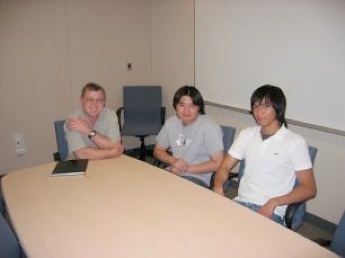
Figure 1 Mr. Chris Foster met Thom and Curtis before the departure on July 21, 2007.
June 30 to July 10
The Dr. Tan arrived in Beijing on June 30, 2007 to meet Prof. Hong and Prof. Cai and arranged the logistic issues before the US student arrival. In addition to the Tsinghua University, the Dr. Tan also visited two other Universities and presented two seminars during this time.
On July 5, 2007, the Dr. Tan visited Beijing JiaoTong University, Beijing, China, Prof. Xiaolong Yuan, who visited the Dr. Tan’s MSLAB as a visiting scholar in 2006, served as the host during Dr. Tan’s visit. The Dr. Tan presented an invited seminar titled “Modeling and analysis of 90nm VLSI Interconnects: problem, solutions and future challenges”.
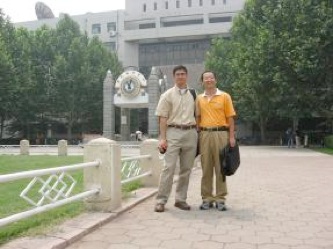
Figure 2 The Dr. Tan (left) and Prof. Xiaolong Yuan in front of the College of Engineering in Beijing JiaoTong Univ.
On July 9, 2007, the Dr. Tan visited Beijing Normal University, Beijing, China. Prof. Zuying Luo served as the host during my visit. The Dr. Tan also presented a talk titled “Architecture-level power modeling and thermal estimation for high performance microprocessor designs” (shown in Fig. 3).
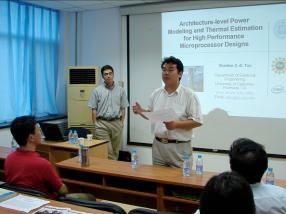
Figure 3 Prof. Zuying Luo (in red), the Dr. Tan and another Faculty
in the Dr. Tan’s seminar in Beijing Normal University.
July 11 to July 31
The three students arrived in the Beijing International Airport at almost midnight on July 11. Dr. Tan picked them up in the Airport and helped them to check into the foreign student exchange center at Tsinghua. On July 12, 2007, Prof. Cai and his group members held a meeting to welcome US students. In the meeting, she introduced their research activities. Ph.D. student Xiaoyi Wang and Jin Shi also presented their research works (shown in Fig. 4).

Figure 4 The seminar room the EDA Lab of Tsinghua University on July 12.
From left to right: Prof. Tan, Prof. Cai, Xiaoyi Wang, Kang Le,
a Ph.D. student, David, Thom, Curtis, Jin Shi.
During the July 14-15 weekend, Prof. Hong and Proc. Cai also invited the Dr. Tan and three US students for a 2-day tour of BaShang Grassland in the Heibei Province, which is located about 300 miles north of Beijing. The trip is very valuable for three US students getting known to many Ph.D. students in EDA Lab. They also made some friends during the trip. The US students also got a chance to see the rural China and experience the hospitality from the farmers in BaShang (Fig. 5 below)
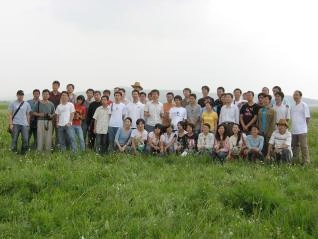
Figure 5 The EDA group and US students in the BaShang Grassland.
On July 16, 2007, the Dr. Tan and the three US students visited the NSF China Center and met the Center Director: Dr. William Chang. Bill welcomed us to China and gave us the introduction to the Center and his work in China. He also encouraged US student to take the opportunity to network with more Chinese students and faculty members and familiarize themselves with Chinese cultures and rules, which will be beneficial for their future career developments.

Figure 6 NSF China Center Director Bill Change talked to the US students.
On July 17, 2007, by the invitation of Prof. Xiaolong Yuan, Dr. Tan and the three US students visited Beijing JiaoTong University (BJTU). We were greeted by a group of host graduate and undergraduate BJTU students. The US students and BJTU students first have a round-table ice-breaking talk followed by a warm discussion. In the afternoon, we visited the modern Physics Lab and school history exhibition in BJTU to learn the history of BJTU and other Jiaotong Universities in China.

Figure 7 US students at school history exhibition in the BJTU .
On July 19, US students also attended a seminar given by Prof. Martin Wang from University of Illinois at Urbana ChamDr. Sheldon Tanon (UIUC) at the EDA Lab on the design for manufacture of VLSI physical designs.
On July 18 and July 20, Dr. Tan gave two seminars at EDA Lab at Tsinghua University about Dr. Tan’s thermal related research and compact modeling researches works.
Tsinghua University, Beijing, China, “Architecture-level power modeling and thermal estimation for high performance microprocessor designs”, July 17, 2007
Tsinghua University, Beijing, China, “Passive compact modeling of inductively coupled interconnect circuits by projection-based balanced truncation”, July 20, 2007.
On Aug. 9, the three IRES students participated the closing ceremony for NSF EAPSI (East Asia and Pacific Summer Institutes Students ) program held in the Beijing Mining and Technology University. The US students met the program China Director Ms. Min Gu. Mr Gu introduced us to the other EAPSI US students. We have chance to listen their trip report and project representations. It was very interesting to know how other US students were doing at China and got to know those students and their projects in China. Dr. Tan, David and Thom also introduced the IRES program and our research works at Tsinghua Univ
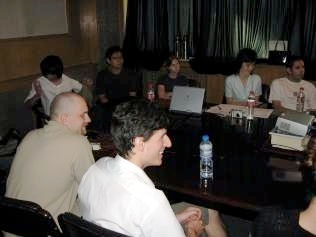
Figure 8 EAPSI China Director Ms. Min Gu (second from the right) with EAPSI and IRES students.
In addition to the social and culture events, the three US students spent most of their time in the EDA Lab and worked jointly with Chinese host students on the development of statistical compact modeling algorithms. In the weekends, they also visited many famous nearby attractions like Forbidden City, Great Wall, Summer Palace to learn the Chinese cultures and history. They also toured well-know commercial districts like Xidan street and WangFuJin street etc for shopDr. Sheldon Tanng and dining.
The research and research activity details can be found their student report (as a separate attached file).
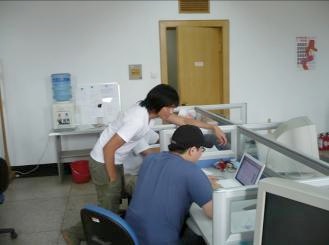
Figure 9 Thom, Curtis and David worked in EDA Lab at Tsinghua Univ.
